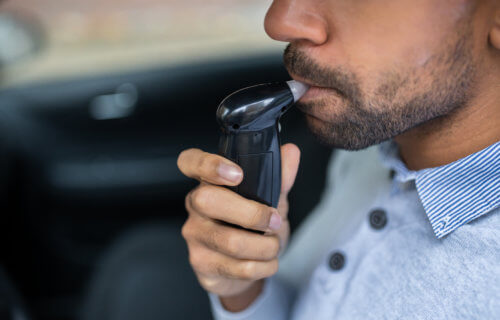WASHINGTON — Most people who have taken a nasal swab test for COVID-19 will likely tell you it’s not a pleasant experience. Could there be an easier, and quicker, way of testing for coronavirus? Scientists say there is — and they’re working on a “breathalyzer” device which works like a drunk-driving test.
An international research team is developing a prototype coronavirus breathalyzer machine. This device will scan the air after patients exhale, just like current breathalyzers detect alcohol particles in a person’s breath. The option would certainly be far more preferable and less invasive than current testing techniques.
At the moment, nasopharyngeal swabs are the gold standard for coronavirus testing. Healthcare workers stick a long swab up a patient’s nose, collecting samples from the nasal passage and back of the throat. Once that uncomfortable part is over, technicians analyze these samples for genes of SARS-CoV-2 — the virus causing COVID-19.
Not only is this process unpleasant for the patient, study authors say it also involves a time-consuming lab test called RT-PCR. With so many people around the world getting tested, it can take medical offices several days before they get results.
Researchers Hossam Haick, Hu Liu, Yueyin Pan, and others say they hope their prototype can give healthcare systems a quicker option. They add a COVID-19 breathalyzer will also be cheaper to use and easier to operate.
How does a covid breathalyzer work?
The report in ACS Nano explains that viruses typically emit volatile organic compounds (VOCs) which can exit a body through your breath. The new invention uses a nanomaterial-based sensor to find SARS-CoV-2 in these exhaled particles. This sensor is made of gold nanoparticles linked to molecules which are sensitive to contact with VOCs.
When the virus compounds interact with these molecules, the sensor’s electrical resistance changes. The scientists are teaching their breathalyzer to specifically look for the specific resistance signal made by COVID-19 particles.
To do this, the study used breath samples from 49 coronavirus patients, 58 healthy participants, and 33 people with non-coronavirus lung infections in Wuhan, China. All the volunteers blew into the machine for two to three seconds while standing less than two centimeters away. This allowed the machine to not only learn the difference between people with or without COVID, but differences in other infections too.
Follow-up test results show an impressive beginning for the coronavirus breathalyzer. Researchers report the device has 76 percent accuracy when comparing COVID-19 cases to healthy patients. That score jumps to 95 percent accuracy when comparing coronavirus patients to other lung infections. The breathalyzer can also tell the difference between current and recovered patients with 88 percent accuracy.
The study notes that the invention still needs more testing with more patients, but it’s the first step towards a rapid screening process.
This article was originally published August 21, 2020.
